Interview with artist Matt McLeod
Matt McLeod has done it all. He is an artist whose works are highly acclaimed and recognizable. He is a muralist responsible for some of the most iconic murals in central Arkansas. He is a teacher, mentor and former gallery owner – and he is a genuinely nice guy. His energy explodes off the canvas in rich colors that make the familiar into something special. Matt’s work can be found at his website mattmcleod.com.
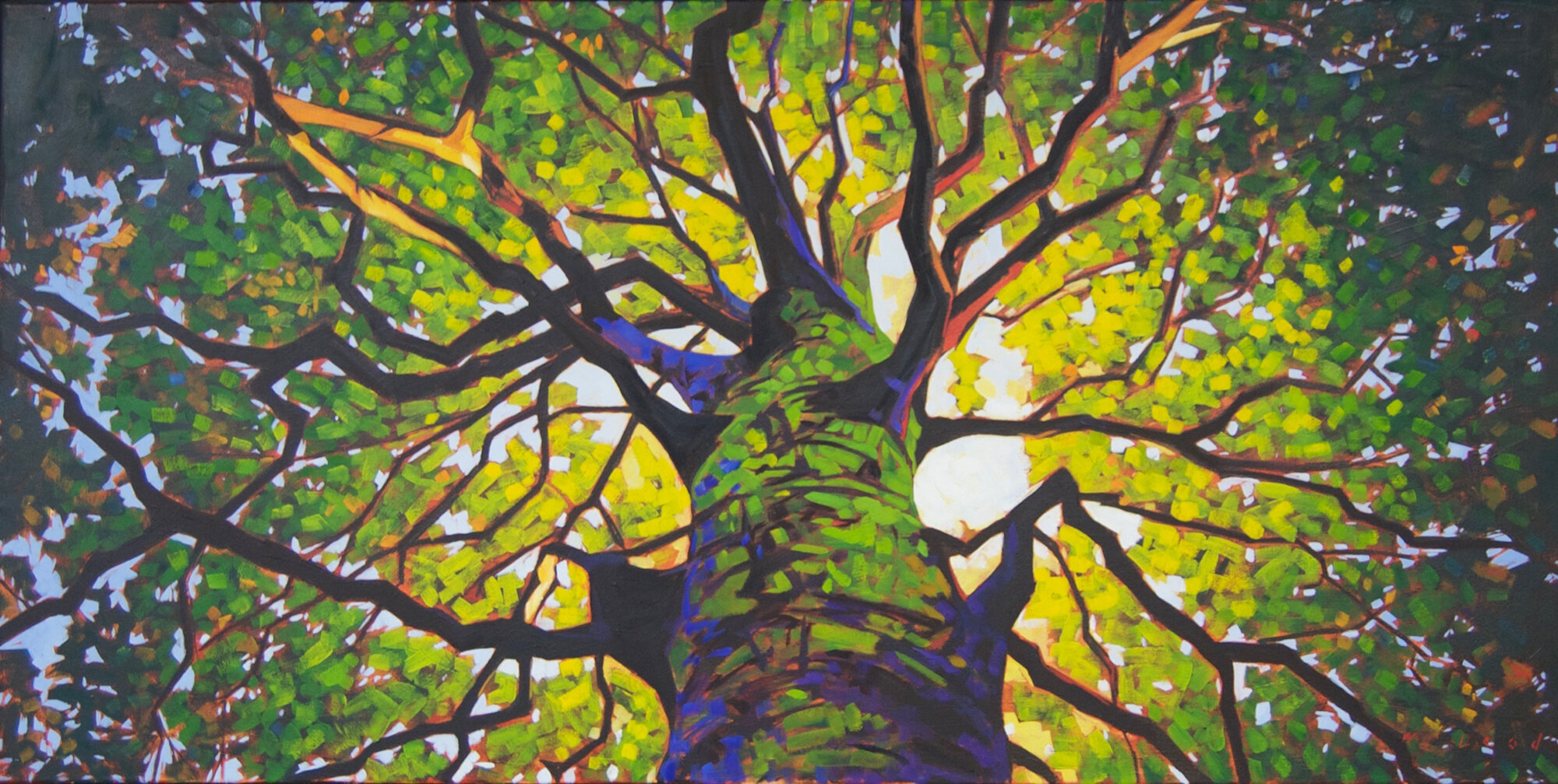
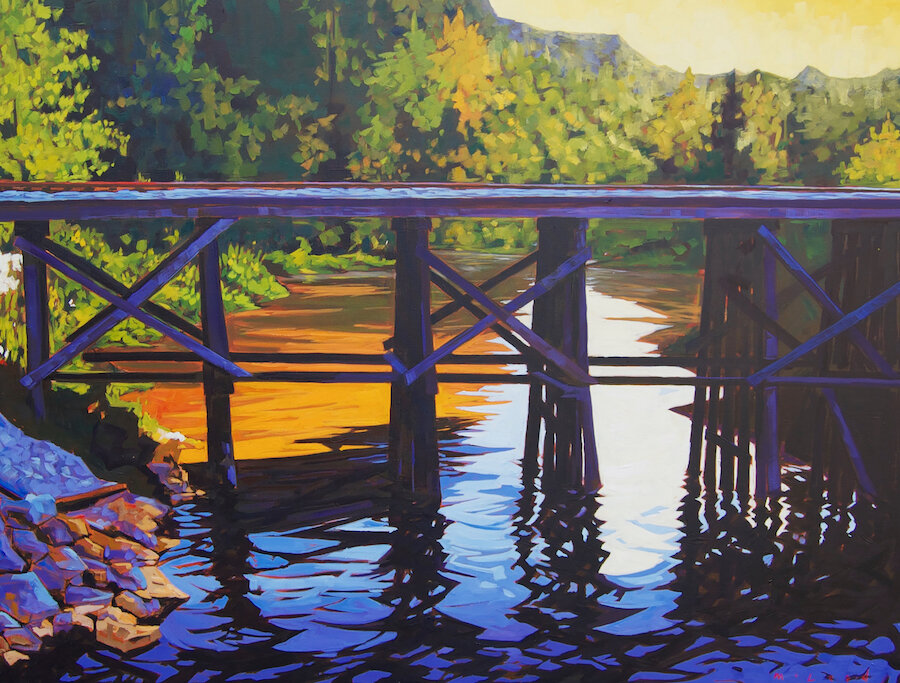
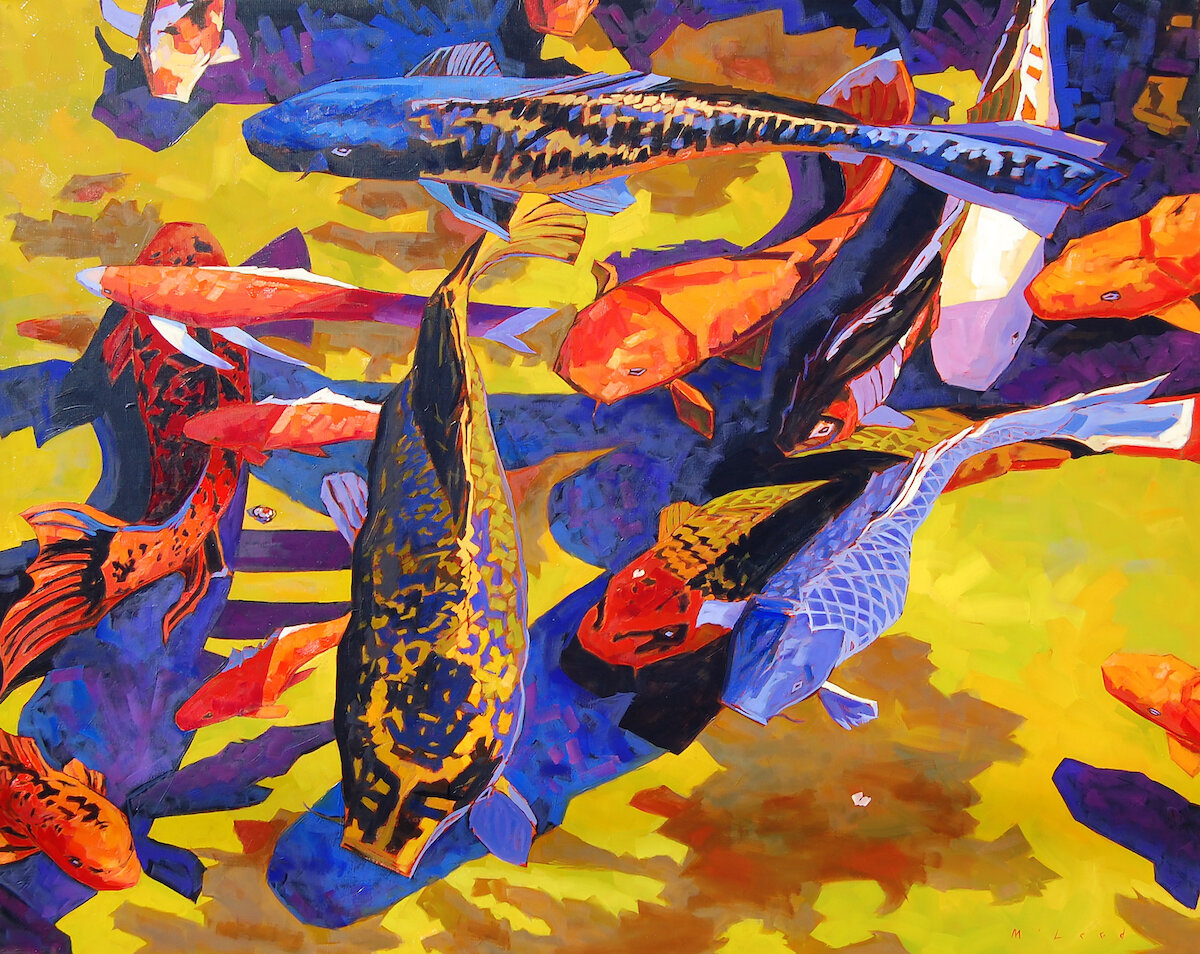
AAS: Your parents, George and Carolyn, are big supporters of the arts. Did you grow up exposed to art and artists?
MM: My parents are terrific human beings. They exposed my sister, my brother and me to art in multiple forms throughout our lives. From early on, we got opportunities to see plays, orchestral performances, dance performances and visual art exhibitions. My mother made sure that all of us took music lessons. I played the piano and guitar. I also sang in the church choir and eventually in the Arkansas Boys Choir, performing around the state.
My grandfather on my mother’s side was a Congressman in the House of Representatives. Congressman Oren Harris served our state for over 25 years. So, my mother grew up in Washington DC. My father grew up in Walnut Ridge. Dad met my mother when he was working on Capitol Hill as a congressional page. I think my parents are like most Arkansans. They have a grassroots humility, yet share a desire for an appreciation of art. Art connects us as humans through our shared culture. Once people latch onto that cultural connection, they want more.
My parents loved to travel. So, my siblings and I regularly got to go to some amazing places. When we traveled, my parents always sought out an experience at a theater, museum, or concert hall. Highlights for me include The Impressionists Museum outside Paris, a performance by the Royal Shakespeare Company in Stratford-Upon-Avon, a performance of Miss Saigon in The West End of London. My young art experience includes early art lessons, attending plays and countless art exhibitions at the Arkansas Arts Center. I cannot stress enough how exceptional the Arkansas Arts Center is. I can’t wait for the new building to be finished!

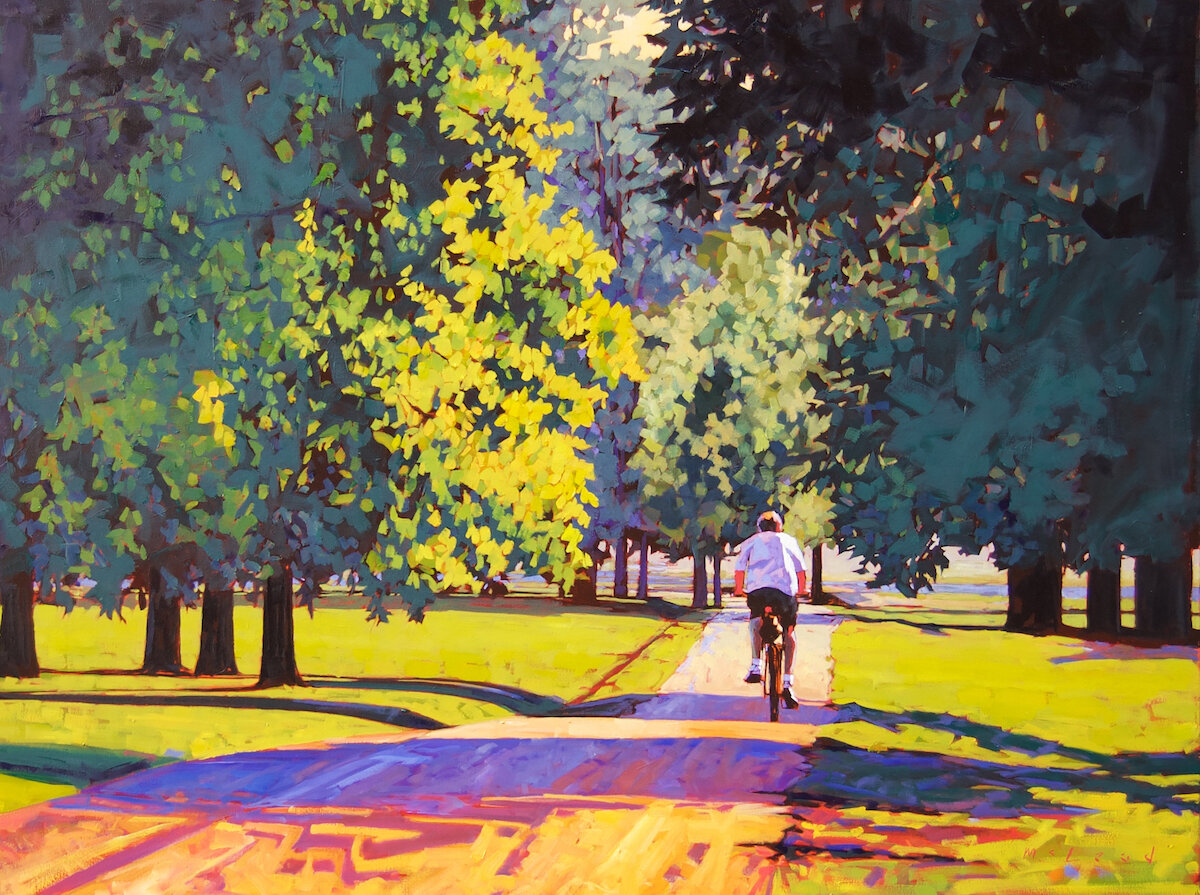
AAS: Matt, before you became a full-time artist and art instructor, you were in advertising. Would you talk about that experience and any influence it had on your eventual style of painting?
MM: When I was growing up, I loved to draw and dabble with watercolors. So, I always loved creating. I just never thought I could make a living as an artist. I didn’t know anybody who was making a living with an art practice. So, I went to Southern Methodist University, in Dallas to get a general business degree. During my sophomore year, I soon took a liking to the advertising courses within the communication arts major. The advertising courses were fun! They were creative!
When I graduated from SMU in 1987, I hit the job market with a sea of young graduates in Texas, all searching for the same jobs. I couldn’t find a job for months. I soon became broke and desperate, while waiting tables. I ended up taking the first job I could get. A friend of mine was leaving a media planner/buyer position with a huge ad firm in Dallas. I asked her to recommend me for the job. Apparently, she influenced my future boss to give me a chance, because I landed the job. My responsibility was to plan TV and radio buys in the western division of the United States for the Pepsi Cola, Company.
My first job in advertising determined my career track for about the next 15 years. I want to set the record straight here. Most of my friends think I worked as an art director or graphic designer. This is not true. My career was as a media planner/buyer, or an account executive. I was able to work for about five years as a film/video producer at Dempsey Film Group in the 90’s. But other than that, I was not allowed to create professionally, except to occasionally give input on ad concepts. I wore a suit in my advertising career. The folks in the creative department hate suits!
“I’m kind of a visual geek. I appreciate a film, photograph or painting in which the elements in the frame are skillfully composed.”
Since I wasn’t part of the creative side of advertising, I learned the business side. I learned how to relate to clients. I learned how to write marketing plans and creative proposals that start with sound objectives, with tactics that flow from those objectives, in order to get results. I also learned how to manage budgets. I also learned to be accountable for spending and deadlines. This experience has been invaluable to me in my art practice. A successful art practice is an entrepreneurial effort. My goal is to be a wildly successful art entrepreneur!
The other great thing I took away from my experience working in ad agencies is design chops. In an ad agency, you are constantly evaluating creative work in order to develop marketing materials that are sharp, clean, attention grabbing and lead you to a purchasing decision. I became a student of good design from my ad campaigns courses at SMU and continued to be a student of ad design through my advertising career. I still look at any visual artform beginning with its design. That’s why I love a living space that has been arranged by a great interior designer, or a building that’s been designed by a great architect. I even critique movies based on how the shots are composed and lit. I’m kind of a visual geek. I appreciate a film, photograph or painting in which the elements in the frame are skillfully composed.
The years of training in advertising make me think very intentionally about how I compose every canvas I paint. Do, I get it right? That’s not really a question for me to answer. I can say that every canvas I produce started with a composition plan. I am intentional about design.
AAS: You were also a brick-and-mortar gallery owner and represented local and not so local artists. What did that teach you about marketing and selling art in the region?
“Artists are the coolest people on the planet.”
MM: Being a gallerist taught me that marketing and selling art is hard, hard work. I loved operating Matt McLeod Fine Art Gallery down on 6th Street. I loved meeting so many people who share my love for fine art. Artists are the coolest people on the planet. Not just visual artists. But, also dancers, actors, musicians, writers, interior designers, architects, film makers, etc. Artists put themselves out there every day. They create extraordinary things that didn’t exist minutes earlier. Artists push the boundaries and move us forward in cultural development.
It’s really amazing to work with dozens of other artists in a gallery. It’s also great work talking with clients who want and need to live with great artwork. The hard part for me, was it was taking so much time away from my first love – creating work. One thing I want to point out: curating is an art form in itself. Putting together a collection to fill an exhibition space is truly an amazingly creative process. That’s why I love to go to openings at The Arts Center or a great local gallery. The artwork itself is the main attraction. But how the art is presented is an artform.
One thing I learned about running a brick and mortar gallery is it is a difficult business. There is tremendous overhead. The work is presented at considerable expense with no guarantee of return. You hope that sales are substantial enough to pay for expenses, create significant income for the artist and a profit for the gallery. But some shows are profitable and some shows are not. The other consideration is that consumer trends do not support brick and mortar retailers in any sector. Consumers are buying online more and more and going to art shows less and less. That’s why I got out of the gallery business. I wanted to focus my attention on creating more of my own work and marketing my work online. The overhead is all but eliminated. Plus, I am back with my first love – creating.
I think we will see only the very best art galleries survive the pandemic and thrive again. Unfortunately, the mom and pop galleries that were doing it because it was fun are most likely going to fade away. The coronavirus has hurt the traditional retail sector so significantly. I have good friends in the gallery business as well as in the restaurant business. I hope they all make it through such a difficult time. I cannot imagine not having great galleries to view local and regional artwork. I hope so many of these great people in the art business survive and thrive again.
Matt at work on Duck Abundance in Stuttgart, Arkansas.
AAS: Your murals are iconic. How did you get started painting murals? They must take a lot of planning and prep work.
MM: Well, it does take considerable planning and prep work. Plus, learning to work on a large scale. People ask me how do I paint murals. My answer is: one step at a time. Seriously, I see painting murals as an extension of painting canvases. To me, a huge mural wall is really like a gigantic canvas. I work the same process, only larger. It all starts with an idea. I then develop the idea into a composition drawing to scale. The hardest part is getting the composition on the wall, because you have to back way up to see each element of the drawing in relation to the whole. I prefer to draw the composition to scale, then project the drawing onto the wall surface using my digital image projector. It’s surprising to people who see me working this way, because I have to project the image at night, when it’s dark enough to see the projection.
Sometimes the surrounding area doesn’t have access to power. Sometimes the street structure won’t allow me to back up enough to project the drawing. In which case I use a grid system to enlarge the drawing to scale with the mural wall. However, I prefer projecting my drawing, because it feels more organic. Sometimes the grid method makes the drawing feel a bit too mechanical.
As far as what makes my murals iconic? I would say it’s my use of color. My color is achieved with multiple layers of paint. I work very hard to create interesting shapes, strong tonal values and vibrant temperature combinations. Most artists don’t want to take the time to apply the multiple layers of paint. So, I think my process sets me apart. I also achieve signature color transitions that are all mixed by hand as I work an area. It’s a hard process. But it’s the only way I know how to paint. I obsess over getting the project to a certain vibrancy. It takes a lot of time and a lot of paint.
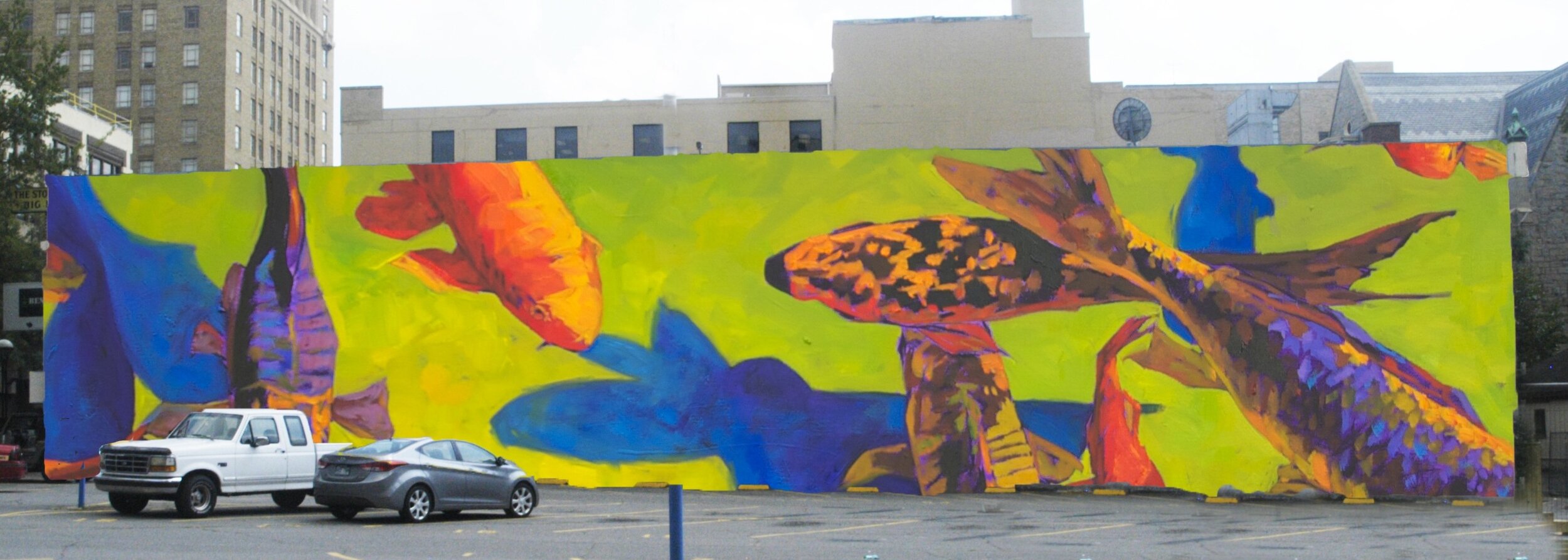

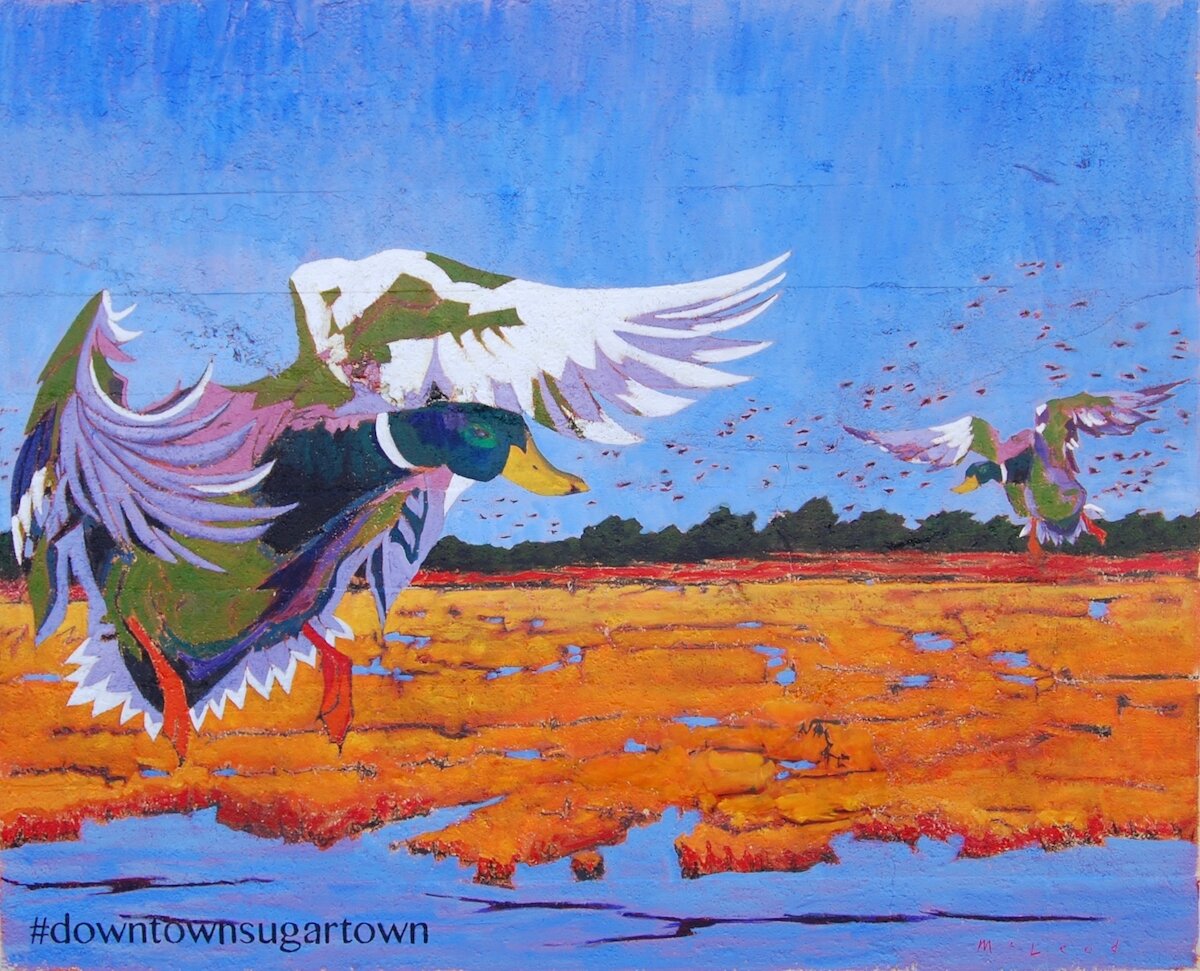
AAS: Your paintings ARE very recognizable for their intense color and brush strokes. You refer to it as Energetic Color. Would you talk more about your style and what inspires you paint with such energy?
MM: I feel like there is an energy, a shared life force that is within us and all around us. I think it’s the essence of what God is. I think this energy is what most people seek to tap into to be better, more enlightened people. That may sound like a lot of mumbo jumbo to some readers. That’s okay with me. But I know that when I am painting, I am working on a higher plane. I feel like I am closer to God. I feel I am doing something that is consistent with my best self.
Energetic Color is my attempt to get at that life force in a subject. I focus my attention on taking an ordinary scene, dissecting it, then reassembling it in a way that has an energy to it. My process is to create interesting shapes, contrasting tonal values and distinct variations in color temperature. I do this with multiple layers of paint, with the last layer hitting only reflected light and highlights. The highlights get the heaviest strokes. I feel like my paintings are most successful, when they feel vibrant yet balanced.
I first learned to paint at the Arkansas Arts Center. I give most of the credit for learning to draw with strong tonal values, to the drawing and painting courses I took at the AAC. Kevin Kresse and Dominique Simmons were the instructors I took most of my lessons with. Both Dominique and Kevin are great artists and good friends. I learned to understand Impressionism and color temperatures from Barry Thomas. Barry has had lots of success locally and regionally. I consider Barry a good friend of mine as well.
But, I really give my understanding of color theory and use of multiple layers to a Canadian painter. Mike Svob is a renowned painter, living in Vancouver, British Columbia. I read Mike’s book on painting about 20 years ago and loved it! I have subsequently attended two of his workshops in the Canadian Rockies near Banff. Mike is a tremendous painter and teacher. He’s extremely generous and fun to work with. I’ve been very fortunate to work with some exceptional artists in my lifetime.
“I feel like my paintings are most successful, when they feel vibrant yet balanced.”
Golden Bluffs, 30” x 48”, oil on canvas
AAS: Your landscapes often depict familiar locales around Arkansas. You must have a great love of the outdoors?
MM: Absolutely! I love running and riding my bike out on the Arkansas River Trail. I usually stop on a ride to take some photographs with my phone. Otherwise I regularly go to a natural spot in the state with my camera. I love to take photos early in the morning or late in the afternoon when the light is just right. I start the composition process with my camera.
I love any excuse to get outdoors in Arkansas. I just bought a new rooftop tent that I mounted on my truck. I plan to go camping this fall, with my mountain bike, a plein-air painting kit and my camera. Hopefully, I will end up with a nice collection of new landscape paintings. At least, I hope to get some good studies done.

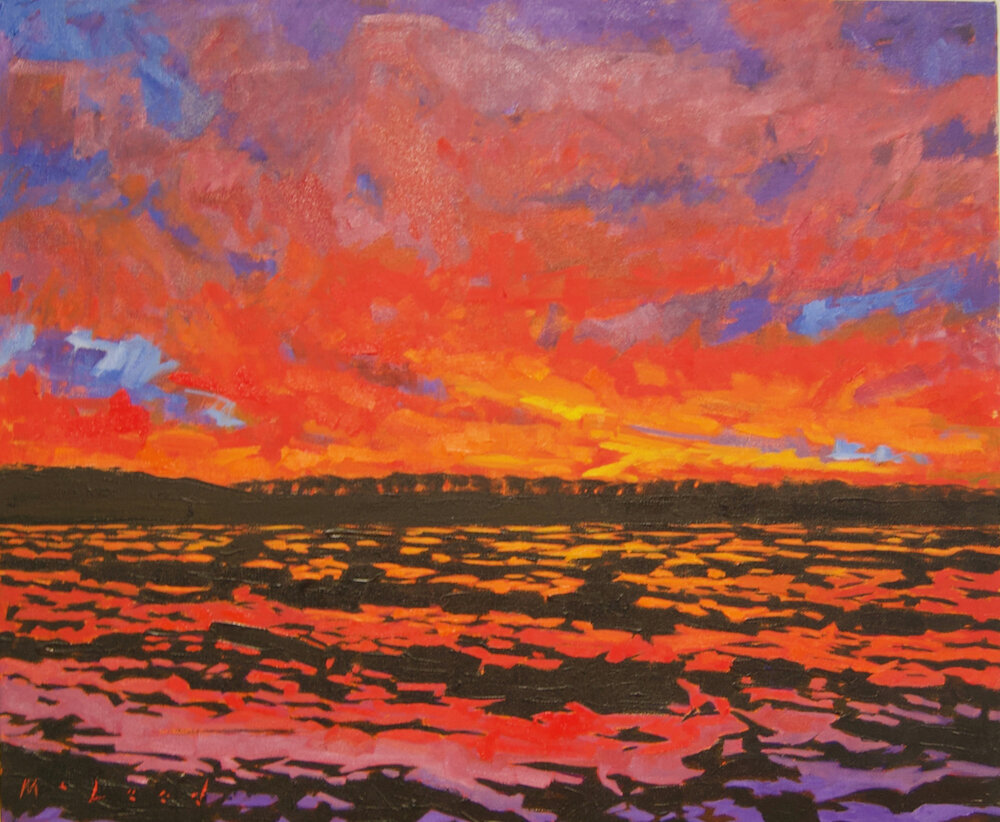
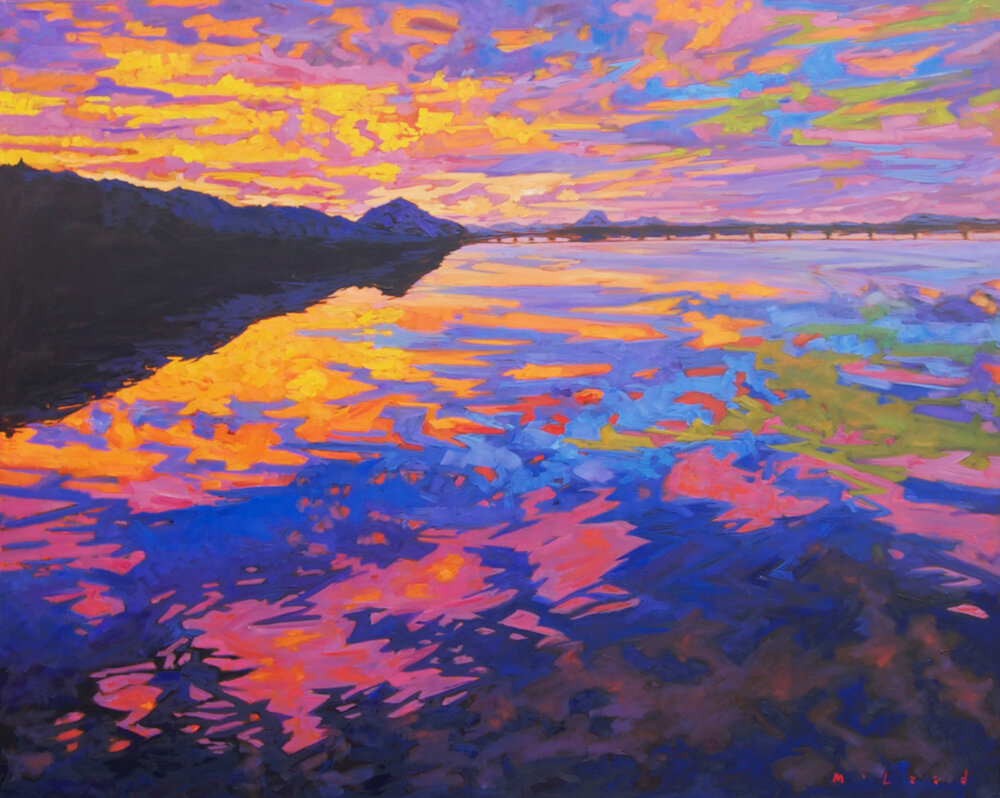
Red Head, 32” x 20”, oil on canvas
AAS: Red Head is one of my favorites. I guess I’d call it a landscape. It just explodes off the canvas. Highly recognizable as a Matt McLeod with its brush strokes and color palette.
MM: Great! I love that one too! Red Head is a perfect example of what I’m trying to do with Energetic Color. It has strong contrasting tonal values, interesting shapes and some really nice combinations of warm and cool temperatures. That explosion off the canvas, you described-that’s exactly what I am going for.
Sunshine Canine, 40” x 24”, oil on canvas
AAS: Of course, you are also known for your koi paintings and other animals. I just love Sunshine Canine. The expression of contentment is just wonderful!
MM: For whatever reason, I seem to be good at painting animals. I love examining their shapes. The shapes that make a fish’s tail structure or a dog’s ear. I try to emphasize that in my paintings – the study of structural shapes. For some reason that study is just clear to me with animals. When I really get the shape making going on a composition, the painting process is fun. For some reason painting animals is really fun for me.
Sunshine Canine is also one of my favorites! Another good example of Energetic Color. You really understand what I am going for! Sunshine Canine is a painting of my son’s former dog Ginny sitting beside an azalea bush. Ginny was a speckled Catahoula, so her black spots on white and grey fur perfectly set up my tonal-value shape making. Ginny was such a cute puppy. One afternoon, I took her outside to take her picture. Ginny walked around the garden, then sat down in this big patch of sunshine and tilted her head back to let the sun warm her face. Somehow, I was able to capture the exact moment that Ginny smiled as the sunlight warmed her face. It’s such a feel-good painting for me. It just feels warm.
AAS: More recently you have begun offering in person and online painting lessons. Is teaching and working with artists something you have always wanted to do?
MM: Yes. I love teaching! It’s fun to see when another artist starts to really get into painting. I try hard to simplify the difficult process that creating a painting truly is. I think, if I can break everything down into simple steps that can be easily repeated, then I have really helped the student. Painting is like anything else you want to do well. It takes a ton of practice. But, if a student can learn some good fundamentals and fall in love with the process, then they can be a great painter.
AAS: You also offer mentoring of young artists. What are some of the fears of up and coming artists, especially in these days? My sense is that these might be very discouraging times?
“A successful art practice is an entrepreneurial effort.”
MM: Young artists fear not making it as an artist. Art is often the one main thing that so many young people are good at. Every young artist dreams of making a career in their form. The artist’s deepest fear zone is the fear of failure. The key to beating fear of failure, is to flip failure on its head. There is no failure. Only learning. Maybe you don’t make as much money as you want as an artist. Find another source of income. Maybe you have to work in digital design or teaching to make ends meet instead of working full time in the studio. Good! What do those other experiences teach you? What can you learn from those professions that inform your studio work? What does the experience teach you about perseverance?
A successful art practice is one that has multiple streams. I create income from multiple sources: original paintings on canvas, fine art prints from my originals, mural projects, painting instruction and mentoring. But I also have a residential real estate business to flip houses. I buy and renovate houses and try to sell them for a profit. My goal is to create an entrepreneurial enterprise in which I have multiple streams of income. At the end of the year, I evaluate what is working and what isn’t. I then develop my business strategies for the next year and follow that strategic plan.
Yes. It’s easy to say these are fearful times for artists. But fear is a part of every business enterprise. You have to make fear a useful tool to motivate you, not stifle you. Sometimes fear is the reason to get to work on a new series, or the reason to market your work more. It can never be the reason to stop trying.
The other thing I would tell a young artist is this: A situation can feel fearful or not. It’s all based on how you look at it. Are you going to say this is a problem I just cannot solve? Or, are you going to say this is a challenge that I will figure out how to get around, get over or get through? For example, a lot of my artist friends are having the best year ever in 2020. A lot of art collectors are spending more time at home now. Those people want to surround themselves with great artwork. I think a lot of collectors are collecting more now because of the coronavirus. The artists who are thriving right now, are marketing and showing work by any means available.
Nurturing Growth, 38” x 48”, oil on canvas
AAS: Your work is widely collected in Arkansas and elsewhere. When I worked at UAMS (University of Arkansas for Medical Sciences) I walked by several of your paintings. I was especially drawn to Nurturing Growth. Again, it is a ‘familiar scene’ we can all recognize in our minds but done in an interesting and really soothing way despite its vibrant color palette.
MM: Thanks! That’s really what I was going for. I was trying to take an ordinary scene of a gardener watering a crepe myrtle and turn it into something extraordinary with shape, values and color. There is something so nice and calming about working in a garden in the morning when the weather is warm and the light is just right.
The other important thing to know about Nurturing Growth, was I knew the painting was to be placed in the Psychiatric Research Institute (PRI) of UAMS. I knew my PRI clients wanted something soothing there. So, that is what I was going for. The people at UAMS, like all of my medical clients, understand that art can help with the healing process. Most hospitals and medical treatment facilities include artwork as part of a holistic approach to healing. Art truly soothes the souls of the sick and wounded.
I have been truly blessed to be included in so many corporate and private collections. I am truly honored to have work in so many homes, offices, hospitals, clinics, law firms, etc. Working with collectors – whether corporate or private - on commissioned paintings has become the backbone of my art business. I think Energetic Color resonates with collectors. Sure. But the other element that has helped me land so many commissions goes back to my training in the advertising business. I learned a long time ago to listen to my clients. I pay attention to what my client wants in their space. With that knowledge, it’s so much easier to deliver artwork that meets expectations. The artwork functions perfectly with the intention of the space.
AAS: You are a big supporter of the arts in general and especially Ballet Arkansas. How did your collaboration with them develop into a workshop of sorts for artists to paint these amazing dancers?
MM: That collaboration was all Michael and Catherine Fothergill’s idea. I was just smart enough to recognize they had a great idea and say yes to it. Catherine and Michael are the Executive Director and Artistic Directors of Ballet Arkansas. They are wonderfully smart, creative people, who enjoy collaborating with artists of various art forms. They had an idea for a collaborative project with visual artists and asked me if I wanted to be a part of it. Of course, I jumped in. Their idea became Art Movement, in which visual artists were able to work with the dancers of Ballet Arkansas to create paintings, drawings and sculpture with ballet dancers as subjects.
The result was an extraordinary exhibition of fine art and dance including some figure drawing demonstrations using dancers as models. The dancers at Ballet Arkansas are amazing! Each has a unique combination of artist and athlete. It was a treat for me to create with the dancers. I love them! My role was to simply invite the visual artists to participate, then curate the exhibition.
By the way, if you ever get a chance to talk with a ballet dancer, you should make the most of it. They are the most positive, upbeat people I have ever met. I think it must be the constant supply of endorphins washing through their brains from so much regular creativity and exercise. The dancers at Ballet Arkansas are truly beautiful people.



